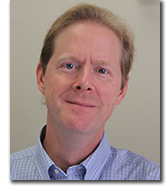
- professor of Classics
- teaches Ancient Art, Archaeology, Roman Civilization, and Latin language
- research interests include Roman spectacle entertainments and the decorative programs of amphitheaters, Latin epigraphy, and Roman sculpture in public venues
- oversees the overseas study tours and workshops of the Virgilian Society, an international academic organization with a study center in southern Italy
Background
"I am the product of three universities in the Big 10 Conference! I got my undergraduate degree in classical languages and ancient history at Indiana University and then received my PhD in art history and archaeology at the University of Michigan. Finally, I did a post-doc in Latin epigraphy as part of a fellowship at Ohio State University."
Teaching
"I teach all of Miami’s ancient art and archaeology courses, pretty much everything in Roman civilization, and Latin language.
"A vast majority of the students in my classes are not fulfilling a major requirement. Rather, those students are there because they want to be there, and that's what I really enjoy about teaching. A lot of these students do not know much about classical languages or archaeology, so I really enjoy the moments when I can see when they suddenly understand not only the material but the professions of archaeology or even museum curating."
Research
"Archaeology is very interdisciplinary, so I do a lot of research on ancient sculpture, buildings, and epigraphy (carved Latin inscriptions). Last year I just finished writing a textbook on Roman art.
"Lately, I have been studying the connection between the manufacturer names stamped on the bottoms of Roman lamps and Roman water pipes from aqueducts. I believe we can find the location of the ancient lamp factories by tracing the identical names on the water pipes.
"I'm also doing research on the Roman historian Tacitus, who described a huge storm that wiped out the entire grain supply for Rome in the harbor at Ostia. I thought that was a weird thing—what kind of storm could sink and burn hundreds of ships? I argue he is describing a tsunami.
"I like to involve students in my research as well. My students have been helping me catalogue ancient sculptures of the Pyramid Hill Sculpture Park in Hamilton, Ohio."
Outside the Classroom
"I would say that The Epic of Gilgamesh, a 4000-year-old book that explains the meaning of life, best represents my own determination and aspirations. I read it every year, as its exploration of what is a good life really motivates me.
"I am in charge of the overseas study programs of the Virgilian Society, an international academic organization, on the Bay of Naples in southern Italy. I oversee the study center there and make sure it operates efficiently and is utilized effectively by students studying abroad. It’s been a wonderful opportunity for me to bring my own students as well."
[July 2015]
 Miami University Oxford, Ohio est. 1809
College of Arts and Science
Miami University Oxford, Ohio est. 1809
College of Arts and Science
 Miami University Oxford, Ohio est. 1809
College of Arts and Science
Miami University Oxford, Ohio est. 1809
College of Arts and Science